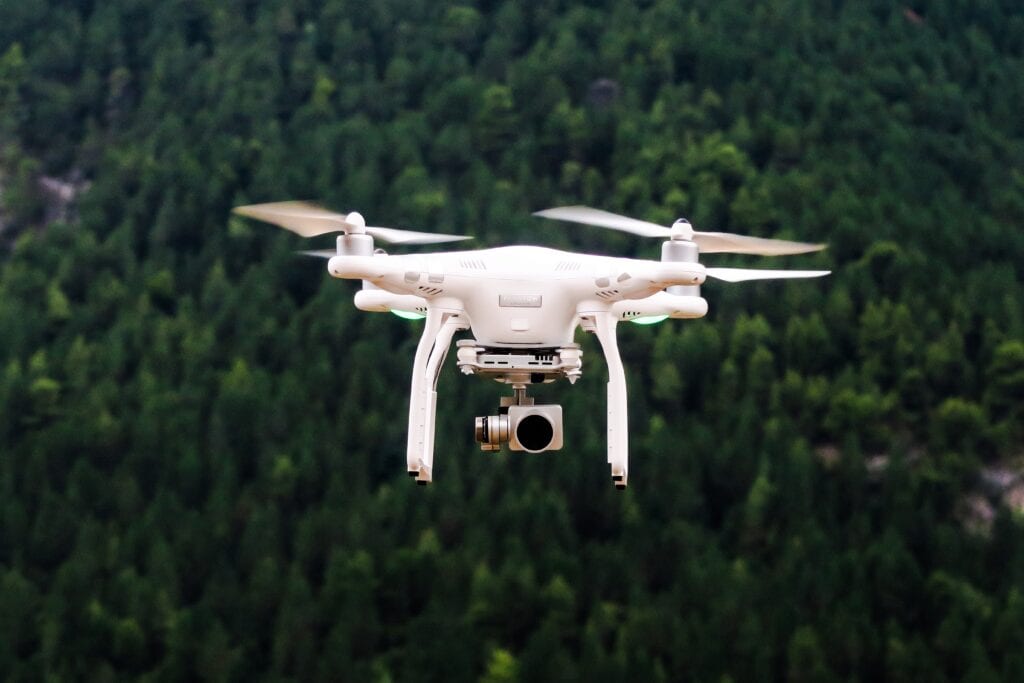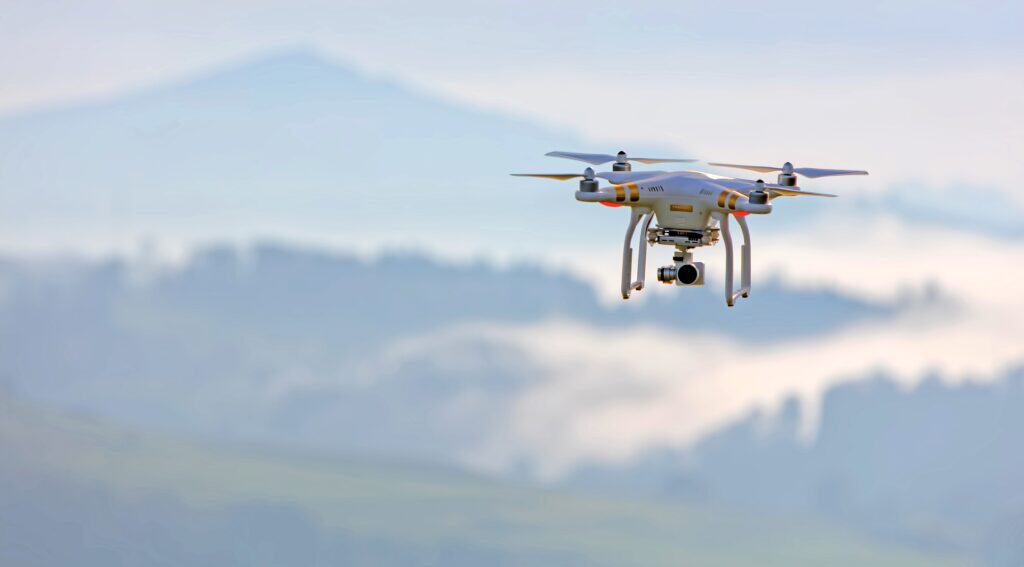The use of drones in serialization and the pharma supply chain is one of the most innovative and exciting technological advancements of the 21st century.
Data from Markets and Markets revealed that global drone logistics and transportation is projected to reach USD 16.1 billion by 2030, growing at a CAGR of 50.1% from 2023 to 2030. Drones have the potential to revolutionize how goods and services are delivered, enabling organizations to reduce logistics costs, increase efficiency, and provide consumers with faster and more reliable delivery of goods.
What does this mean for the pharmaceutical industry?

The Aerial Advancements in Pharma
As the industry aspires to enhance patient safety and streamline operations, drones have emerged as a game-changer, reshaping how medications are handled, transported, and monitored throughout the supply chain.
These unmanned aerial vehicles are revolutionizing the pharma supply chain and serialization practices, offering unparalleled efficiency, speed, and accuracy advantages.
Let’s dive deeper into how the use of drones in serialization and the pharma supply chain can revolutionize the pharmaceutical industry with a specific scenario:
Amidst the vast landscapes of rural areas, where conventional transportation struggles to reach remote communities swiftly, drones could emerge as guardians of health, ensuring timely and life-saving medication deliveries. Take, for instance, a scenario in Vanuatu, where the lack of adequate infrastructure posed a significant challenge in providing essential medical supplies to distant villages.
In 2019 the Vanuatu Government, with support from UNICEF, implemented a pilot programme of vaccine deliveries by drone for children in remote villages.
What would have taken days or weeks via traditional means was accomplished within hours, significantly reducing the risk of treatment delays and improving patient outcomes.
The impact of this program extends beyond mere transportation logistics. It shows that the use of drones in serialization and the pharma supply chain has the possibility of transforming the dynamics of healthcare accessibility, ensuring equitable access to medications for historically underserved communities.
This example vividly illustrates how drones are not just revolutionizing supply chain logistics but serving as lifelines, transcending geographical barriers to deliver vital medications where they’re needed most. It highlights the transformative power of aerial technology in the pharmaceutical industry, emphasizing its pivotal role in enhancing patient safety and healthcare accessibility on a global scale.
The Impact of Drones on Serialization
Drones could play an instrumental role in serialization efforts by providing real-time tracking and tracing capabilities. Through their aerial abilities, these devices enable the seamless identification and monitoring of pharmaceutical products at every stage of the supply chain.
Serialization data, including unique identifiers and product information, can be efficiently captured, transmitted, and integrated, ensuring regulatory compliance and bolstering drug authenticity.

How is the industry using drones in serialization and the pharma supply chain?
MIT
MIT has developed a system of small drones that can fly around a warehouse to scan inventory using bar codes and RFID tags. This technology can greatly reduce the counting workload for humans in large distribution centers and could be a vital tracking tool to prevent counterfeiting or warehouse losses.
MSD
After consulting with UNICEF, MSD led an AT&T and Softbox proof-of-concept trial. AT&T’s LTE-connected drone transported Softbox’s “Skypod” thermal packaging technology as part of the collective’s demonstration of how temperature-sensitive medications could be delivered by drone in an emergency or disaster.
To follow the drone and provide data to a web and mobile interface, AT&T leverages its IoT technology. While in transit, the Skypod continuously measures the temperature inside and outside. This facilitates the monitoring of drug temperatures by all involved parties to guarantee a smooth delivery process.
Matternet
In 2019, Matternet, a leading developer of commercial drone delivery systems for urban and suburban environments, partnered with UPS and launched the first regular commercial drone delivery route in the U.S., transporting diagnostics and medicine to hospitals in North Carolina much faster than other transportation options.
Overcoming Obstacles and Regulating the Skies
So, why are drones not yet mainstream?
While the potential of drones in serialization and pharmaceutical supply chains is immense, challenges persist.
Factors such as airspace management and infrastructure, safety, and security, and public acceptance and trust have presented significant challenges to growth
Ensuring the safe operation and integration of drones in airspace, especially in urban areas with dense populations, requires reliable systems for collision avoidance, redundancy, and managing unexpected situations.
The general public’s acceptance of drones operating in urban and residential areas plays a crucial role in the growth of drone deliveries.
Addressing concerns related to noise pollution, privacy, and potential disruptions is essential to gain public trust and support.
Not surprisingly, the biggest obstacle to growth has been regulation. Drones are regulated by national aviation authorities, and the rules surrounding the use of drones for commercial purposes vary from country to country.
However, collaborations between regulatory bodies, industry stakeholders, and drone manufacturers are actively working towards establishing standards and protocols to ensure safe and ethical drone operations within the pharmaceutical landscape.
Paving the Way for Future Applications
Looking ahead, the use of drones in serialization and the pharma supply chain can open doors to innovative applications. Beyond logistics, drones hold promise in surveillance for counterfeit drug detection, emergency medical deliveries, and remote healthcare services.
Their adaptability and agility are catalysts for transforming how the industry approaches patient care, ensuring faster responses and increased accessibility to medications globally.
Additionally, the use of drones in serialization and the pharma supply chain could be a transformative stride towards a more efficient, secure, and patient-centric industry landscape. As these aerial vehicles continue to evolve and regulatory frameworks adapt, their role in serialization and the pharma supply chain will only expand.
In recent years, we’ve seen a number of trials and project deployments, but we’ve yet to see a pharmaceutical company fully integrate drones within their supply chain.
As the body of research grows, more data is collected and drone delivery companies develop further expertise, we expect adoption to progress rapidly, particularly in disaster responses.
However, for the market to progress, further guidance, infrastructure, and support are needed from regulatory bodies and aviation authorities.


